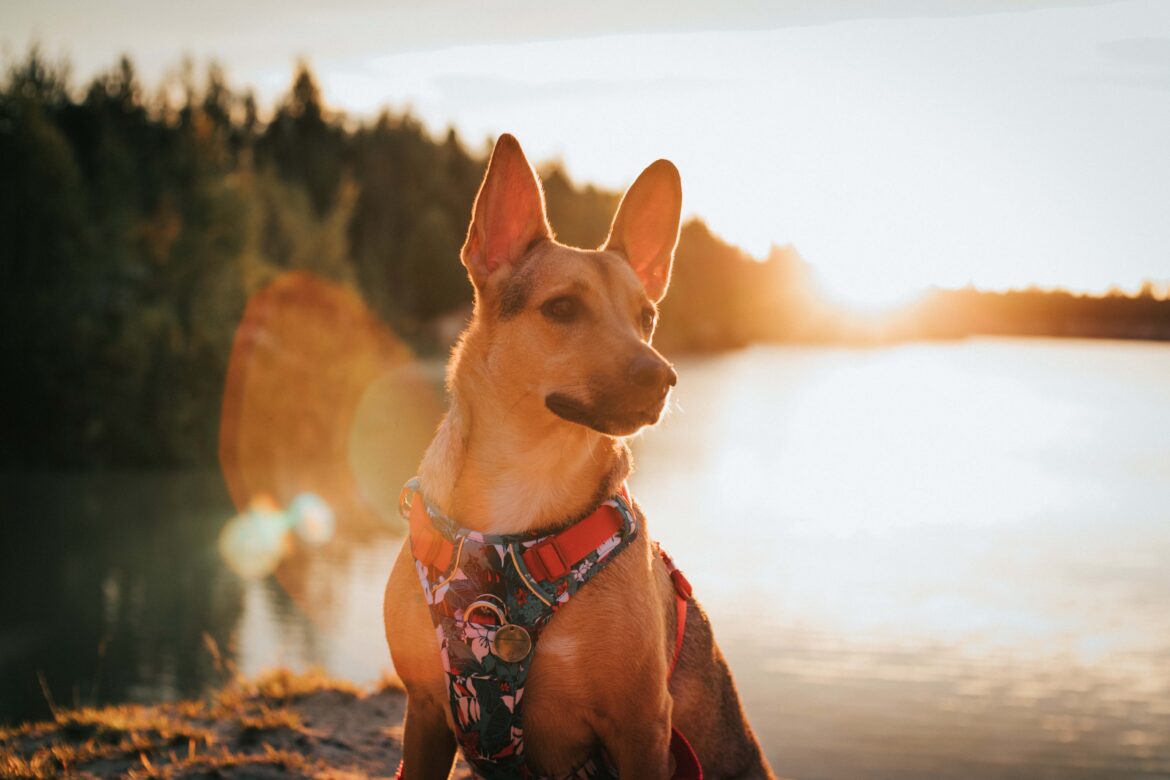Introduction to the Russian dog breed
There are snowy mountains and vibrant cities in Russia. Not only is this a stunningly beautiful country, but its people have contributed to developing several of the most popular dog breeds in the world.
Most Russian dog breeds are huge; working types meant to protect and hunt. But the Russians also have cute lapdogs, developed specifically as royal pets.
Read on to learn about the top 27 dog breeds in Russia, including some that might surprise you.
Black Russian Terrier
Check out this huge, fluffy creature! The Black Russian Terrier is a large breed of intelligent canine. The combination of their brains and brawn makes them excellent guard dogs (though they tend to be wary of strangers, early and consistent socialization is crucial).
In the decades following World War II, when interest in dog breeding revived, breeders brought together close to seventeen distinct canine strains to create the modern Black Russian Terriers. They appear like Giant Schnauzers but act more like Newfoundlands and are excellent security dogs. Their thick coats keep them warm and make for adorable cuddling.
Being high-energy canines, they need to run, swim and go on long walks every day, and that’s just the beginning. The Black Russian Terrier is destructive if not properly exercised or given enough one-on-one time with its owner.
Due to their dominant personalities, training will be difficult. A knowledgeable owner and a systematic, reward-based training program will yield the best results.
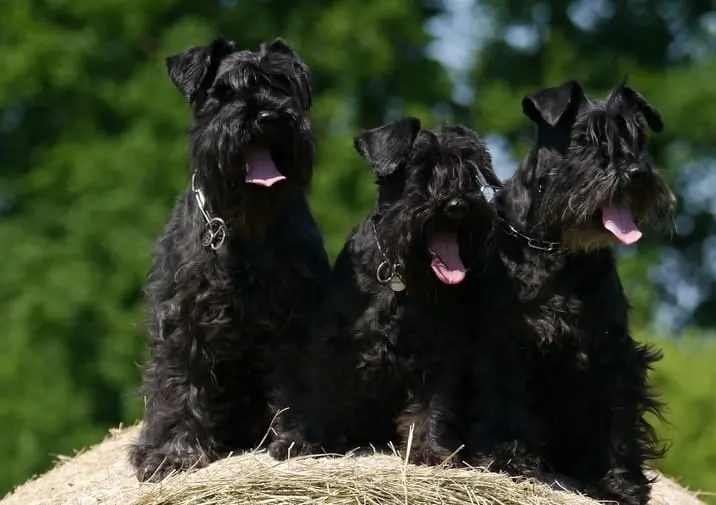
Image Credit- Getty Images
Borzoi
Russian Wolfhounds, or Borzois, can be traced back to the 9th and 10th centuries, when they were developed as a sighthound specifically to hunt wolves. Before hunting wolves with sighthounds went out of style, hunting trials were used to choose the best Borzoi dogs to breed.
The Borzoi’s long, silky coat needs to be brushed several times weekly and bathed only when necessary to prevent the natural oils from being stripped from the coat. Consistency in training, with humour and compassion, is essential while working with the Borzoi because of the breed’s independence and stubbornness.
They are high-energy pets who need daily walks and playtime and strict confinement or a leash when outside because of their propensity to chase anything that moves.
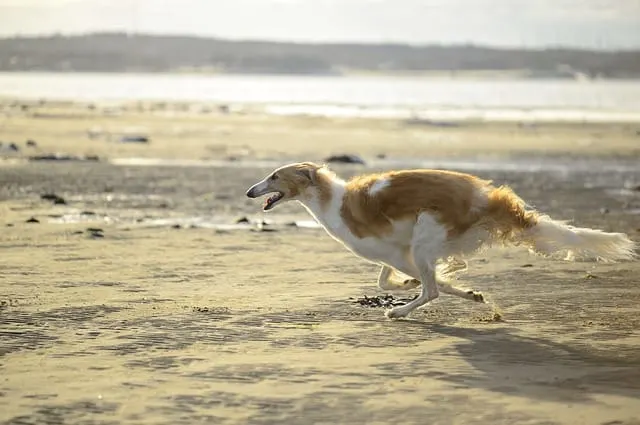
Image Credit- Getty Images
Caucasian Shepherd
Born in the Caucasus Mountains, the Caucasian Shepherd is a Mastiff-type breed. These giant Russian dog breeds have been around for at least 2,500 years; they were bred to work on farms and do various tasks, but their primary duty was to defend livestock from dangerous wild animals like wolves.
If you desire a Caucasian Shepherd, you should know that this Russian dog breed tends to choose a person with whom they will create a close attachment and won’t tolerate being apart from them for too long. You’ll be rewarded with a gentle and loyal friend for the rest of their lives if you give them the time and space they need.
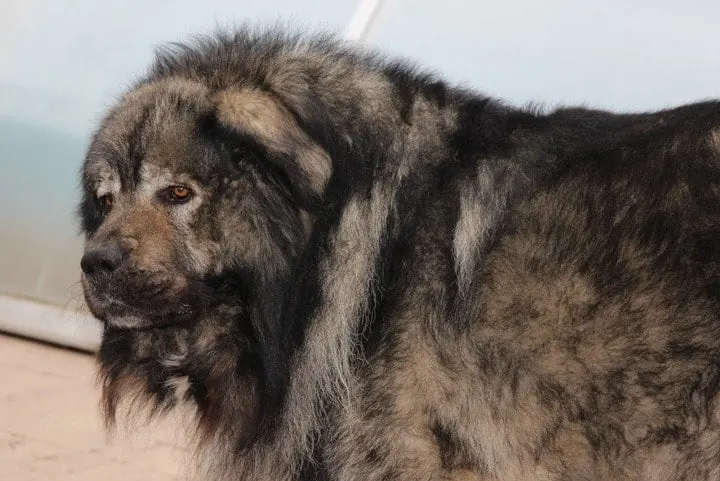
Image Credit- Getty Images
Central Asian Shepherd
The Central Asian Shepherd is one of the oldest dog breeds, stretching back over 5,000 years. These Shepherd dogs, similar to their Caucasian counterparts, have spent millennia protecting the cattle and property of local farmers.
The Soviet Union is credited with standardizing this breed in the 1920s, even though its ancestors were likely from Central Asia. In the years following the dissolution of the Soviet Union, a new strain of these canines, the Central Asian Ovcharka, was developed.
Although the two breeds look very similar to the naked eye, their sizes, coat colors, and temperaments are very different. And because of their natural protective tendencies, these shepherds skyrocketed in popularity in the early 2000s. In the past, these dogs enjoyed unparalleled acclaim in Russia.
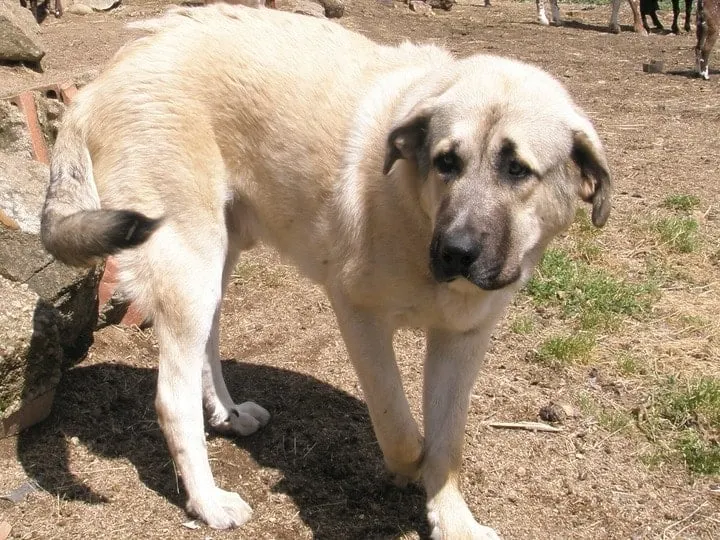
Image Credit- Getty Images
East European Shepherd
Many people compare the East European Shepherd to the German Shepherd because of the many similarities between the two breeds. This hardy breed of Russian dog was originally produced in 1930 for the military due to the necessity for a dog that could perform in various environments despite the country’s notoriously cold winters.
The East European Shepherd inherited its fearless nature from its ancestors, making it an excellent guard dog even today. Despite their great intelligence and boundless energy, they may resort to destructive behavior if not given ample opportunities for both types of exercise.

Image Credit- Getty Images
East Siberian Laika
Laika of eastern Siberia is more massive than its eastern cousin. They have also been utilized as hunting dogs and serve sled dogs and drivers. This breed is also difficult to keep, though it is generally warmer for the owner than its western counterpart.
They need training to develop the right behavior. Start doing this from a very young age to minimize any stubbornness. The Eastern Siberian Laika has incredibly high predatory drives and is eager to chase small mammals.
For this, they are more suitable for the family as the sole pet. This dog is very energy-intensive and requires at least 60 minutes of exercise daily.
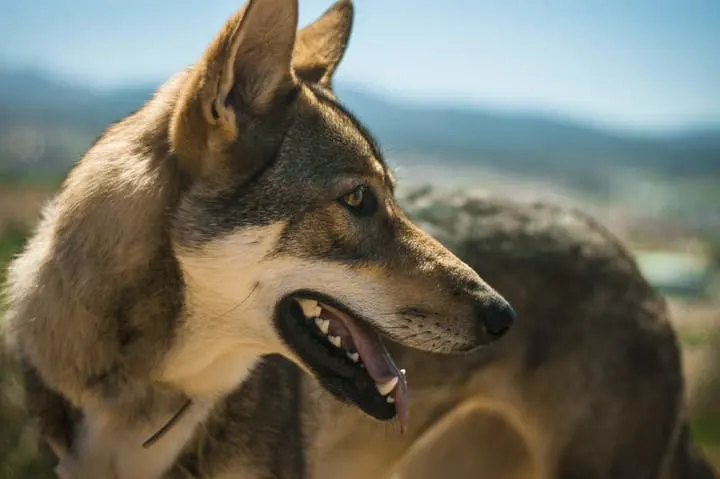
Image Credit- Getty Images
Franzuskaya Bolonka
There are two types of Bolonka dogs in Russia, one of which is the Franzuskaya Bolonka. The etymology of this name may be baffling, as “Franzuskaya” translates to “French,” even though these dogs originated in Russia. Instead, the popularity of other curly French breeds, like the Poodle, inspired the development of this breed.
Franzuskaya Bolonkas are naturally extroverted; therefore, they crave the spotlight. They readily return your show of affection. Remember that these dogs can make a lot of noise. This is why they are so useful as guard dogs.
Though they make a fine watchdog, these little dogs aren’t built for guard duty. They are friendly people who don’t take long to warm up to new people because of their natural inclination to do so.
Given their friendly nature, these dogs would benefit greatly from a visit to the dog park, where they could socialize with other pets while getting some much-needed exercise. They don’t require much physical activity, so daily strolls of 25 to 30 minutes should keep them healthy.
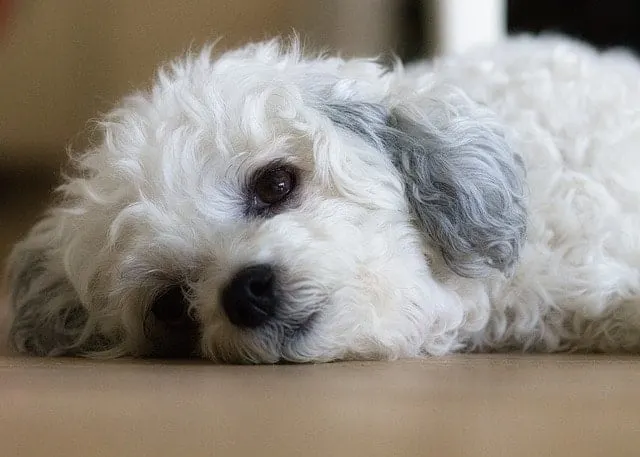
Image Credit- Getty Images
Hortaya Borzaya
A unique kind of sighthound, the Hortaya Borzaya thrives in the open spaces of the Russian countryside. The Chortai, Russian Greyhound, Eastern Greyhound, and many more names apply to this breed of dog. As a result of their heritage as hunting dogs, they will be unhappy in cramped dwellings and instead seek out expansive yards where they may run around at will.
Despite their athletic prowess, many dogs would relax at home with their families. Since they are so dedicated and friendly, they don’t make the best security dogs but make wonderful companions.
They get along well with other family members but need extensive early socialization to accept small pets. They have a strong instinct to hunt, which leads them to chase after everything little, which can cause chaos around the house if not curbed. Since they are so active, their daily exercise time is recommended to be broken up into four 30-minute periods.
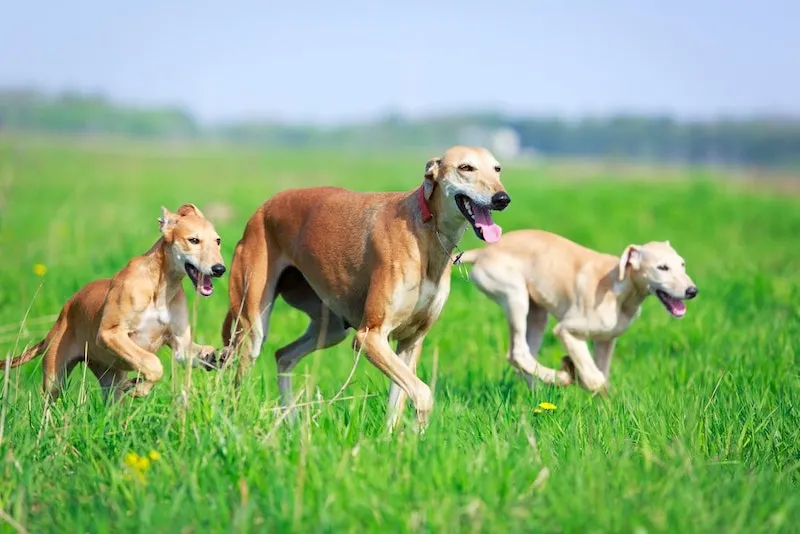
Image Credit- Getty Images
Karelian Bear Dog
The Karelian Bear Dog is a Russian dog breed with hunting and guarding traditions. It was originally kept as a companion and tool by Russian and Finnish peasants. This breed of Spitz was originally seen in red, red and grey, and black and white, but today only the latter color combination is favored by breeders.
It is believed that all modern-day Karelian Bear Pups are derived from a small group of extraordinarily hardy dogs that could thrive in a hostile environment and on the battlefield.
The breed is still widely popular in its native Finland and Russia but has declined in popularity elsewhere. Their excellent intelligence and power make them great competitors in obedience and sled dog competitions.
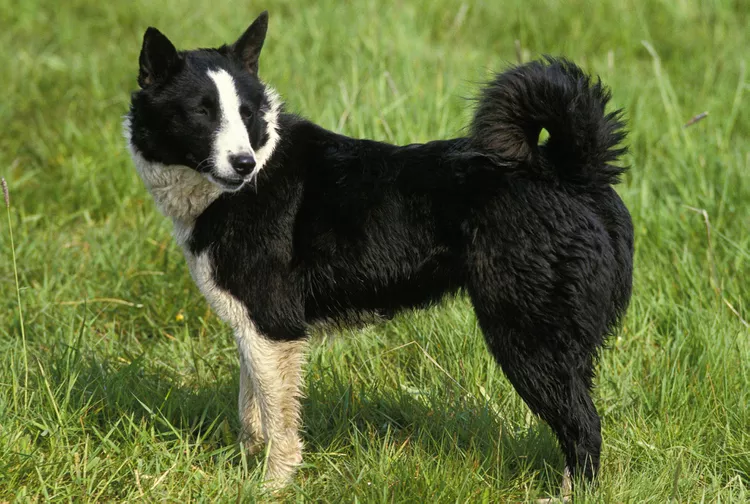
Image Credit- Getty Images
Karelo-Finnish Laika
The Karelo region of Russia is the birthplace of the Karelo-Finnish Laika. The smallest of the Laikas, they were developed for transportation on hunting expeditions. Even though their stature prevents them from hunting huge wildlife, they can take down medium-sized animals and birds.
As such, they make excellent guard dogs in addition to loving pets. When it comes to showing love to their human relatives, these Laikas may be the softest of the bunch. They get along fine with other dogs, but other pets in the house, especially those of a smaller size, are at risk due to their strong prey drive.
There will need to be a lot of patience, and positive reinforcement when training these smart pets. When they feel they have been mistreated in any way, they can keep a grudge for a long time. You can count on this dog to be a huge fan of playtime; to keep them under control, you’ll need to assist and tire them out. A daily workout regimen of about 90 minutes would be sufficient for them. It’s a lot of pressure, so be sure you’re ready.
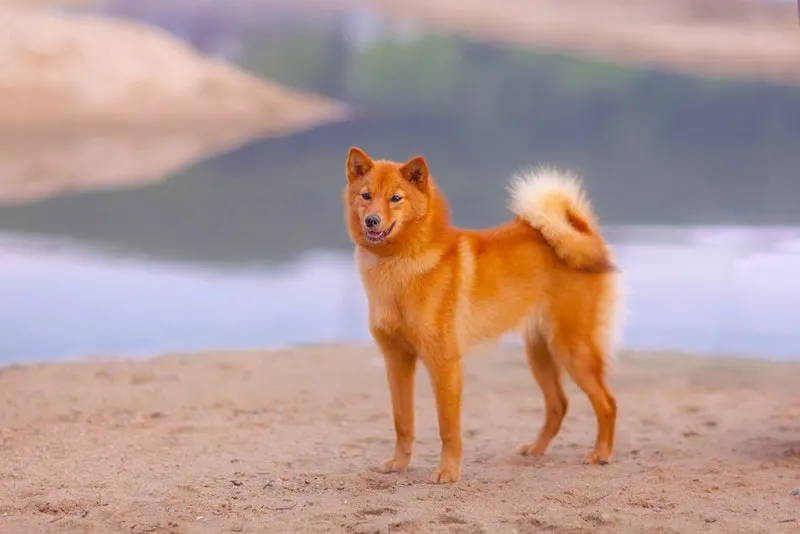
Image Credit- Getty Images
Moscow Watchdog
If St. Bernard were a distant relative in Russia, it would be the Moscow Watchdog. In reality, these canines represent a cross between Saint Bernard and the Caucasian Shepherd. In the Soviet Union, these gigantic canines were produced to weigh up to 150 pounds.
However, in contrast to Saint Bernard, Moscow Watchdogs are high-energy dogs that need frequent walks. During World War II, they were bred when Russia needed assistance controlling internal criminality. Government warehouses, railways, and labor camps employed them as security dogs.
They used to be extremely uncommon outside of Russia, but their popularity is rising steadily in and around the continent of Europe. Moscow Watchdog’s are not the most common Russian canine breed even now. And even if they’ve made it to the United States, they’re rare.
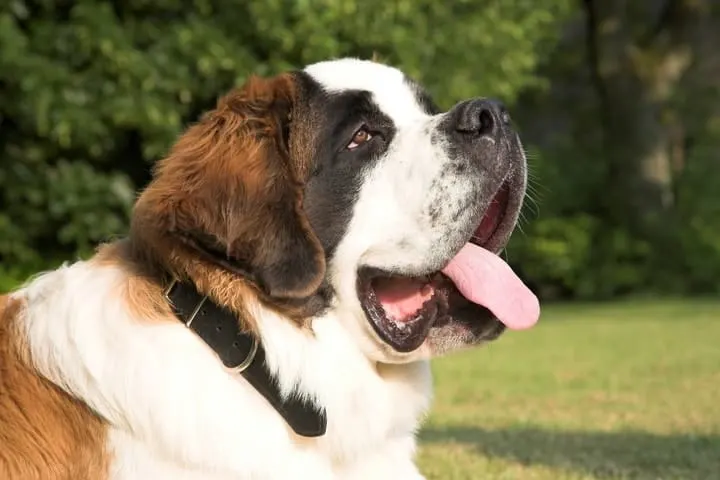
Image Credit- Getty Images
Moscow Water Dog
Another breed created in the Soviet Union in the 1950s, the Moscow Water Dog, is also known as the Russian Newfoundland. They were originally bred to serve as Navy companions, but their hostile nature made them unsuitable.
Strangely, they frequently attacked sailors rather than helped them. That was an issue. This dog breed is today on the verge of extinction. This breed of dog was discontinued since it was no longer needed.
However, they played an important role in developing the Black Russian Terrier breed. The Moscow Water Dog was utilized in a breeding program alongside 13 other breeds to produce one of the most popular “army dogs” in Russia.
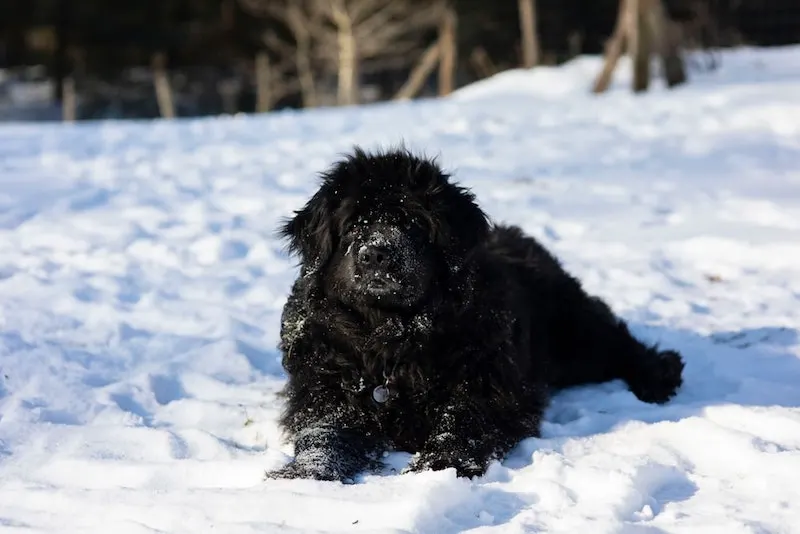
Image Credit- Getty Images
Russian Harlequin Hounds
There are two major Russian dog breeds of scent hounds; the Russian Harlequin Hound and the Anglo-Russian. However, even inside their nation, they remain most rare dog breeds.
The Russian hunting dog is an uncommon breed, although it is still in use today. The Russian Hound and the English Foxhound were bred together to create these dogs. Because of this, they are exceptionally proficient in locating “red game,” such as foxes and wolves.
The tricolored coat and stocky frame of a Russian Harlequin are instantly recognizable traits (patches over a white coat). These canines resemble the smaller tri-colored Beagle in many respects. To this day, many individuals have trouble distinguishing between the two breeds.
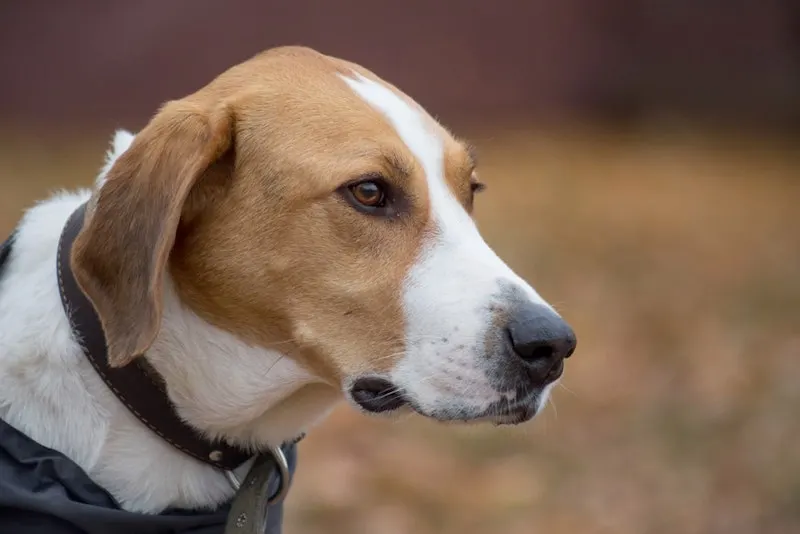
Image Credit- Getty Images
Russian Hounds
Scent hounds, or Russian Hounds, originated in Russia sometime in the 18th century. Their original purpose in life was to function as hunting companions to other dogs like the Russian Borzoi, with the Hound used to flush out the quarry before the other dog gave pursuit.
They have a great sense of loyalty and remain good hunting companions even now. If you’re planning on bringing a Russian Hound into your home, it’s important to ensure there won’t be any tiny animals running around. Their instinct to hunt prey means they pose a significant threat to any small pets you could have at home.
Russian Hounds, thanks to their intelligence and obedience, are relatively easy to train or socialize. Because of their boundless enthusiasm, they thrive when doing regular exercise with their owners. If you want to assist in tiring out your dog, you’ll need to keep up with its rapid pace for about 60 minutes of vigorous exercise.
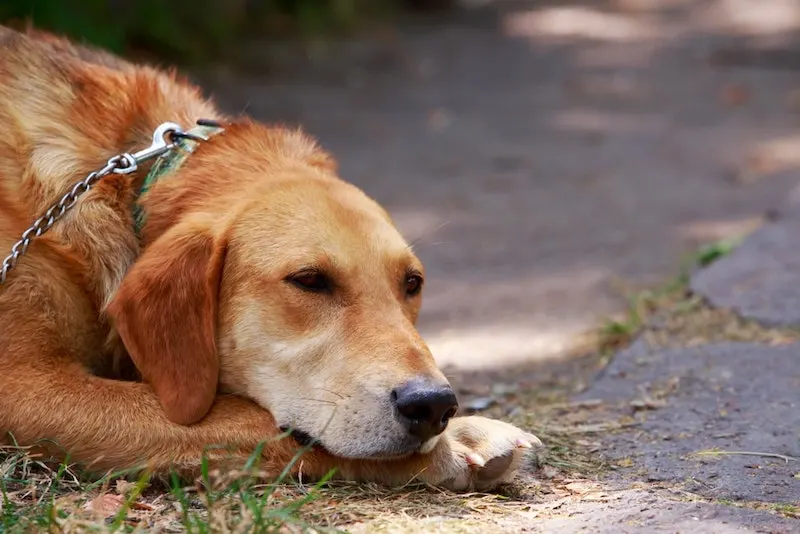
Image Credit- Getty Images
Russian Spaniel
The Russian Spaniel is a relatively new dog breed, first appearing in Russia after WWII. Nonetheless, in their brief time on Earth, they have won the hearts of many. As hunting companions, they excel as retrievers.
Upon returning home, they immediately win over the hearts of their loved ones with their cheerful and pleasant demeanor. They have the patience to be around even the youngest children, but they still need to be socialized to feel at ease in new situations.
Russian Spaniels are high-spirited dogs, yet they don’t require extensive playtime to be content. This breed usually needs 45 minutes of daily exercise. A sample workout schedule might consist of a brisk 20-minute walk followed by 25 minutes of strenuous sports like fetch. While they, like other dogs, thrive in expansive outside areas, some are perfectly happy spending most of their time indoors, even in tiny homes.
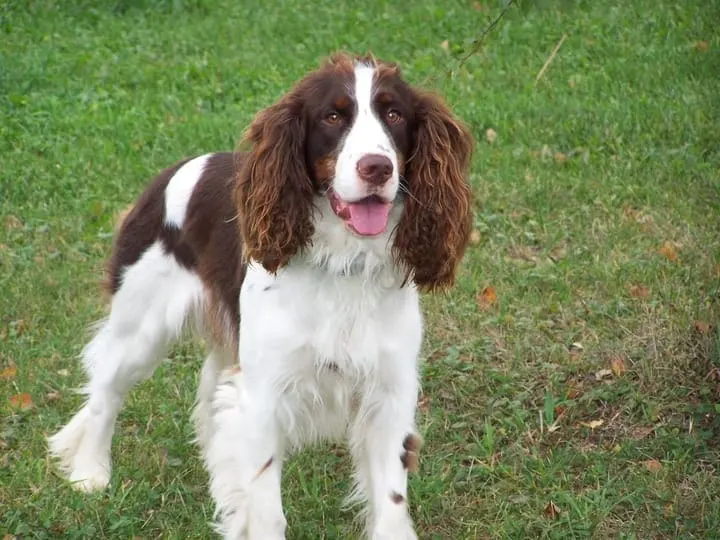
Image Credit- Getty Images
Russian toy terrier
The AKC classifies the Russian Toy as a member of the Miscellaneous Class, which includes breeds still making their way up to full recognition in the organization. The English Toy Terrier was brought to Russia in the 1700s, and here is where the Russian Toy got its start.
The Russian Toy Terrier was nearly wiped off during the Russian Revolution of 1917; however, in 1958, a new and unusual puppy was released, considered the ancestor of all Russian Toy Terriers.
The Russian Toy is a petite, smart, and lively breed from Russia that will play with you all day and then sleep in your lap for as long as you’ll have it. They show intense loyalty to their loved ones yet are reserved with new people.
The Russian Toy comes in two varieties, the smooth-coated and the longhair, and their care needs vary accordingly. The smooth-coat version requires much less upkeep. Instead of brushing the longhaired twice or three times a week, you’ll only need to brush this type of hair once a week.
They need moderate activity on a daily basis, but quick sprints (even around the apartment) will do.
Due to their intellect and willingness to learn, training will go smoothly, but their stubbornness could present some difficulties.

Image Credit- Getty Images
Russian Tsvetnaya Bolonka
The Russian Tsvetnaya Bolonka is another member of the Bolonka family. The Franzuskaya is only white, while the Tsvetnaya can be found in various hues. As a general rule, these breeds share a similar demeanor.
Tsvetnaya Bolonkas do well in compact spaces, such as apartments, and make for wonderful lap dogs. They do best when showered with lots of parental love and attention. Keep in mind that they are somewhat reticent. They may be more receptive to new people and situations if socialized at a young age.
Training should begin as soon as possible after adoption to prevent them from being overly independent and obstinate as adults. Consistently reinforcing positive conduct is the most effective method of teaching and training. They need daily activity but don’t overdo it, or their little bodies may need help keeping up.

Image Credit- Getty Images
Russo European Laika
The Russian-European Laika, also known as the Russo-European Laika, is a member of the UKC’s Northern Breed Group. They are the smallest of the three Laika breeds and may be traced back to a region between Finland and the Ural Mountains. They were developed as hunting dogs, specifically for squirrels but also for other small game.
The Laika, a breed of dog with European and Russian ancestry, is known for its amiability, devotion, and compatibility with kids. However, they are extremely protective of their territory. Thus, other dogs may be met with hostility if they invade their space.
Like most Russian breeds, the Russian-European Laika has a thick double coat that must be brushed daily and bathed only a few times a year.
They are high-energy pets that require daily walks of at least 60 minutes. They will be miserable in the city but thrive in the country.
The Russian-European Laika’s stubborn nature makes training them just as difficult as it is for other Russian dog breeds. You can gain a loyal and watchful friend through consistent, patient, and rewarding training.
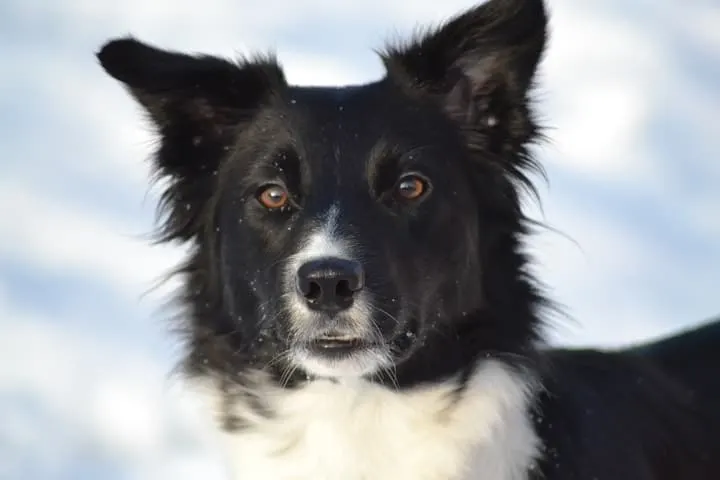
Image Credit- Getty Images
Samoyed
Another well-liked canine with Russian origins is the Samoyed. You can’t miss them because of their enormous size, bright expressions, and thick, white fur. They are thought to have descended from early canines because neither the wolf nor the fox can be found in their ancestry. Solitary hunters, herders, and fishermen in Siberia would not have made it without these animals.
They enjoy doing similar labor and are content to keep at it, but they also make wonderful pets. They are amazing companion animals, full of love and loyalty. For this reason, they are suitable for a wide variety of homes. Because of their amiable nature, Samoyeds don’t make good guard dogs. Instead, their sharp senses and general vigilance make them effective as watchdogs.
It’s important to try to keep your Samoyed busy; otherwise, they could get bored and start misbehaving. Samoyeds are stubborn; therefore, you’ll need a firm command to prevent harmful activities throughout training. They will need a large yard since they enjoy running about.
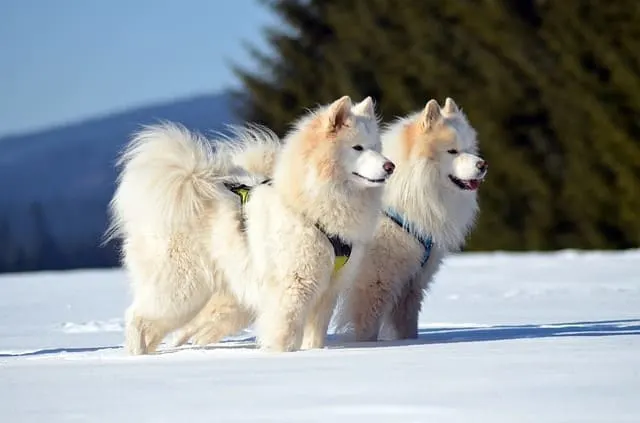
Image Credit- Getty Images
Siberian Husky
Without question, the most well-known type of dog to come from Russia is the Siberian Husky. They’ve come a long way, baby, yet many still pull sleighs for a living. When making last-minute deliveries, Huskies may be one of the only breeds capable of running 100 miles in a single day.
When doing their jobs, these canines leave no stone unturned. They not only enjoy their work, but they require it. Huskies are full of life and have a charmingly mischievous and playful side that endears them to their new families.
They make the best companions for anyone who likes to stay active. They’ll keep up with you all day if you let them. However, kids will need to practice running large distances. Just don’t try to transform a Husky into a lap dog. They will appreciate it very much!
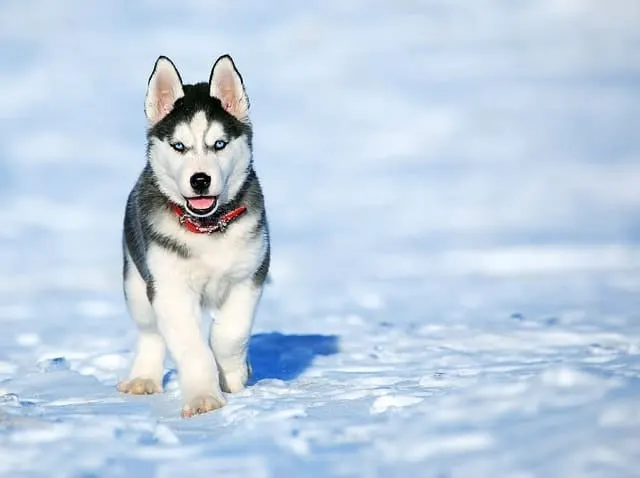
Image Credit- Getty Images
South Russian Ovcharka
Ukrainians are responsible for creating the South Russian Ovcharka, sometimes known as the “Russian Sheepdog” (when it was still a part of the Soviet Union). Consequently, devoted fans often refer to them as the Ukrainian Shepherd dog.
You can often see them along the vast grasslands between the Black Sea and the Sea of Azov. They are generally used as herding dogs and guard dogs in the area. They can survive in a wide range of climates, making them an extremely adaptable dog breed.
They’re some of the best all-around laborers because of their sturdy build and thick fur. To be sure, such canines are scarce. Even in Russia and Ukraine, you’ll have a hard time locating one.
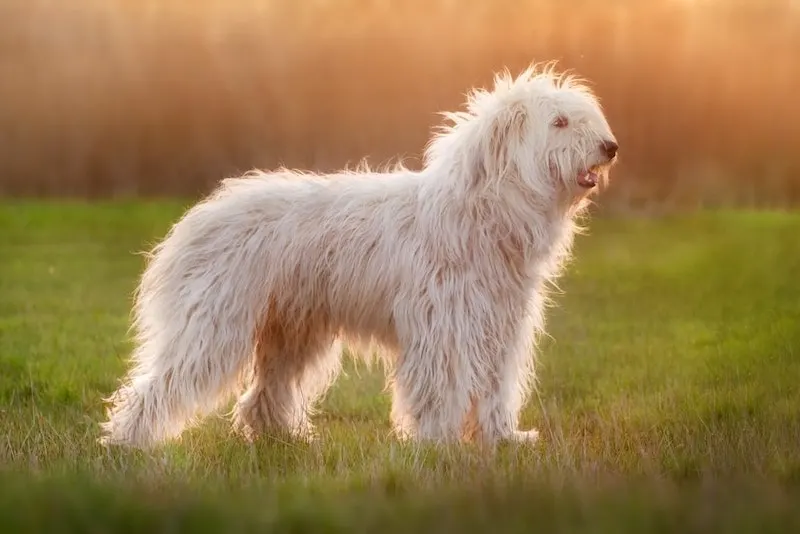
Image Credit- Getty Images
South Russian Shepherd Dog
In the United Kennel Club, the South Russian Shepherd Dog is classified as a member of the herding subgroup. There is speculation that it is a cross between wolves and local sighthounds or shepherd dogs. On the Russian steppes, they played the role of herders and protectors of animals.
While the South Russian Shepherd is certainly a family dog at heart, the dog has a strong sense of independence. They thrive in isolation and happily spend time guarding their territory. Their protective instincts make them wary, so they only show moderate playfulness and affection.
With its thick, long-haired coat, the South Russian Shepherd requires regular care to control shedding and avoid mats.
They are very active dogs who need to run around and play for at least an hour daily.
Independent personality makes training difficult, but consistent, strong training and socializing will be effective.
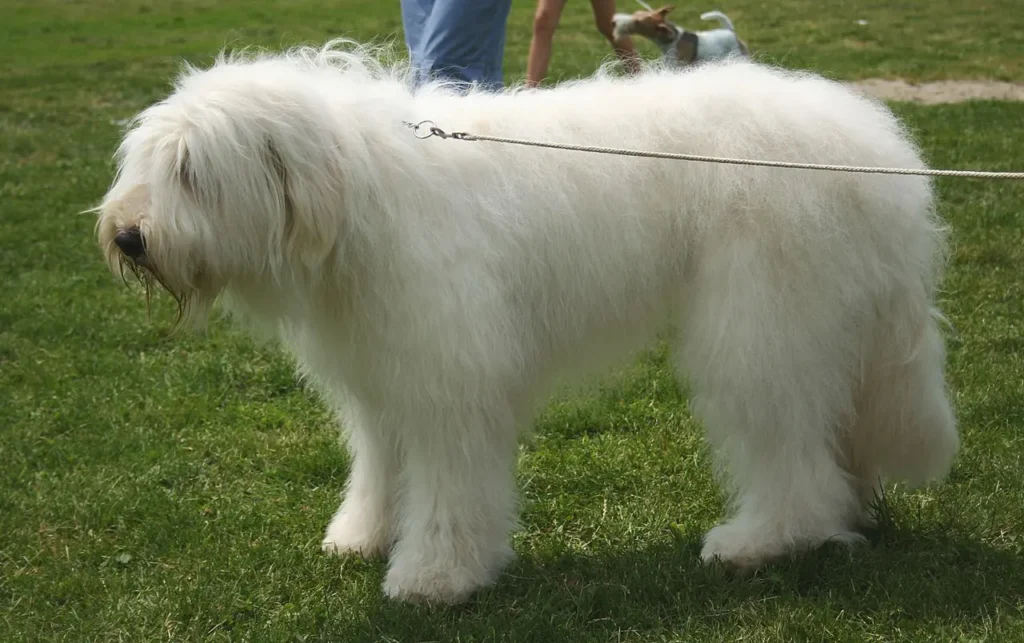
Image Credit- Getty Images
Sulimov Dog
The Shalaika, or Sulimov Dog, is the only jackal-dog hybrid in the world. More precisely, they are the offspring of two Siberian Huskies and two golden jackals. I mean, why did they even breed them? So that he can be the best guard dog ever.
Shalaikas, named after their creator Klim Sulimov, first flew out of Sheremetyevo Airport on the Aeroflot carrier. The goal was to breed highly adaptable sniffer dogs that could serve as airport security canines. The Moscow airport now employs around 25 Sulimov dogs.
These canines are extremely scarce since they were never intended for wide distribution. There are less than fifty dogs of this breed left in the world. And they’re all taught from early on to identify and track down 12 distinct explosives-related components.
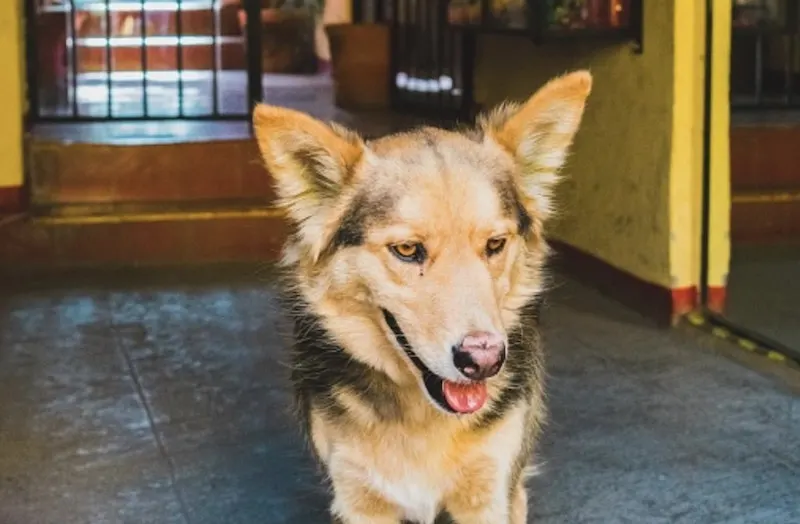
Image Credit- Getty Images
Taigan
When Kyrgyzstan was still a part of the Soviet Union, it was home to the rare breed, of sighthound known as the Taigan, sometimes spelled Kyrgyzdyn Taighany. This breed of dog has been called the Russian Greyhound by some because of the striking resemblance to that of the famous Greyhound.
They share a medium stature and a slightly curly coat length: the Russian Taigan and the Greyhound. Furthermore, the form is very similar. The primary distinction is that Taigans was developed specifically for hunting in the remote Tian Shan mountain regions.
Taigans can effectively hunt a wide variety of animals, including marmots, foxes, and wolves. Although the exact ancestry of these dogs is unknown, scientists have found genetic similarities to the Saluki, Afghan Hound, Sloughi, and other well-known and sighthound breeds.
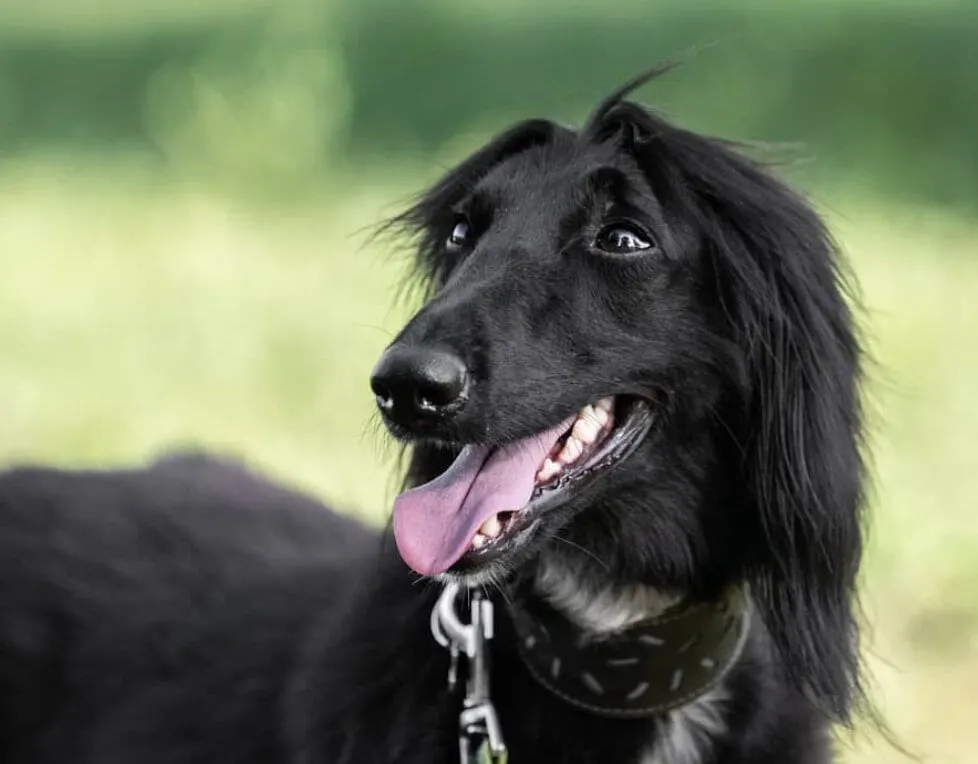
Image Credit- Getty Images
Volkosob
Do you agree that this canine resembles a wolf? Yes, the Volkosob does share some of those characteristics. The Volkosob is a cross between a wolf and a dog that was bred to aid Russian soldiers in patrolling the boundaries of the world’s largest country. They’re big and bold like wolves, with the disposition to match.
Volkosobs are known to be hostile on the job, but off of it, they prove to be loyal companions. Over 200 wolf-hybrid dogs were developed at the University of Cologne before the Volkosob emerged, so it took some time. In 2000, a mother named Nadia gave birth to the first known unusually loving wolf-dog hybrid, which went on to have 40 puppies known as “Volkosobs” (Russian for “wolf-dog“).
These canines have a passion for work and have mastered many skills. These abilities include surveillance, bomb detection, and drug smelling. When compared to a conventional dog, a volkosob’s time spent on a task may be measured in seconds, not minutes. When finishing a task, they get right to the point.
Moreover, their sense of smell is almost six times that of a dog. As a point of comparison, researchers estimate that a dog’s sense of smell is somewhere between 10,000 and 100,000 times more acute than that of a human. Volkosobs can withstand subzero conditions thanks to their thick fur. They possess superhuman strength of grasp and seemingly infinite endurance. The Volkosob has been called “the hidden weapon of Russian border patrols” because of its extraordinary capabilities.

Image Credit- Getty Images
West Siberian Laika
Inheritance from wolves accounts for the wolfish appearance of current West Siberian Laikas. Initially, they were raised for the sole purpose of hunting big and small wildlife. They still have a strong desire to catch and eat prey because of their innate hunting instincts.
You shouldn’t get a West Siberian Laika if this is your first dog because of its high maintenance needs and the difficulty of training. They are difficult to train because of their stubborn nature, so you will need to learn how to take control of the pack quickly. They can turn into a reliable friend once you’ve done so.
Do not try to confine this dog in a tiny apartment. As a result of their heightened vigilance, they will begin barking loudly at anything they deem suspicious, which may cause some disturbances in the neighborhood. This is only the beginning; they require a large area to travel freely. West Siberian Laikas require around an hour and a half of daily activity as a high-energy breed. Leash walks are a great method to satisfy their need to explore while still keeping them under control.
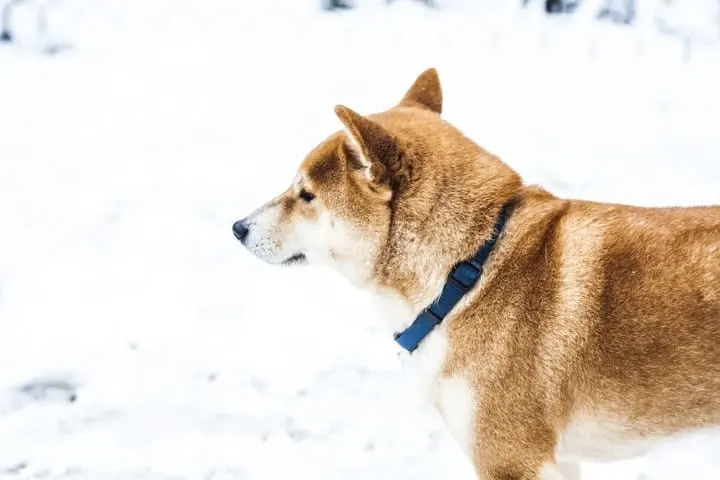
Image Credit- Getty Images
Yakutian Laika
Originating in the Yakutia region of Siberia, the Yakutian Laika is another AKC Foundation Stock Service dog. The native Yakute people kept Laikas as pets and used them for herding reindeer and going on hunts. One of the earliest uses for dogs was as sled pullers.
Great family dogs, Yakutian Laikas, are known for their friendly demeanor, intelligence, and ability to build close ties with children and other canine household members. Although they have a strong prey drive and may chase smaller animals, they can learn to get along with cats if raised with one. The Laika from Yakutia is a loving, loyal, and calm companion.
On average, the Yakutian Laika only needs to be brushed once a week, but more frequently during the spring and fall when they shed excessively.
They are high-energy pets requiring frequent playtime and cannot be left alone for long periods.
While their intelligence and obedience make them easy to teach, you should be aware that they tend to be solitary dogs who are apprehensive of strangers.

Image Credit- Getty Images
Conclusion
Many Russian dogs are incredibly friendly and loving despite the country’s reputation for cold and hostile weather. While it’s true that dogs of a given breed will always have certain qualities, it’s comforting to know that each dog you meet is an individual.
If you’re lucky enough to welcome a Russian dog breed into your home, you owe it to him or her to give him or her the exercise, mental stimulation, and medical attention he or she needs to live a long and fulfilling life. You’ll quickly realize that your furry buddy brings happiness no matter where they are, whether attending to their chores or snuggling up with you at home.
